In order to turn our readers into comprehenders we need to go deep when working with a book. One of my very favorite books that makes reading for meaning so much fun is Alexander and the Terrible, Horrible, No Good, Very Bad Day. Perfect for teaching cause and effect, it is also rich with comprehension building opportunities for students to make inferences, decode longer words, as well as build social skills. In this post I’ve shared ideas and free activities for teaching cause and effect in your classroom.

Teaching Cause and Effect
Introducing students to cause and effect relationships can be tricky. Some students struggle to connect events with outcomes and can easily confuse which is the cause and which is the effect. Using this Alexander book with its familiar to kids causes and immediate effects make it an ideal mentor text to teach students to identify cause and effect. (This slide is part of an Alexander teaching PowerPoint.)
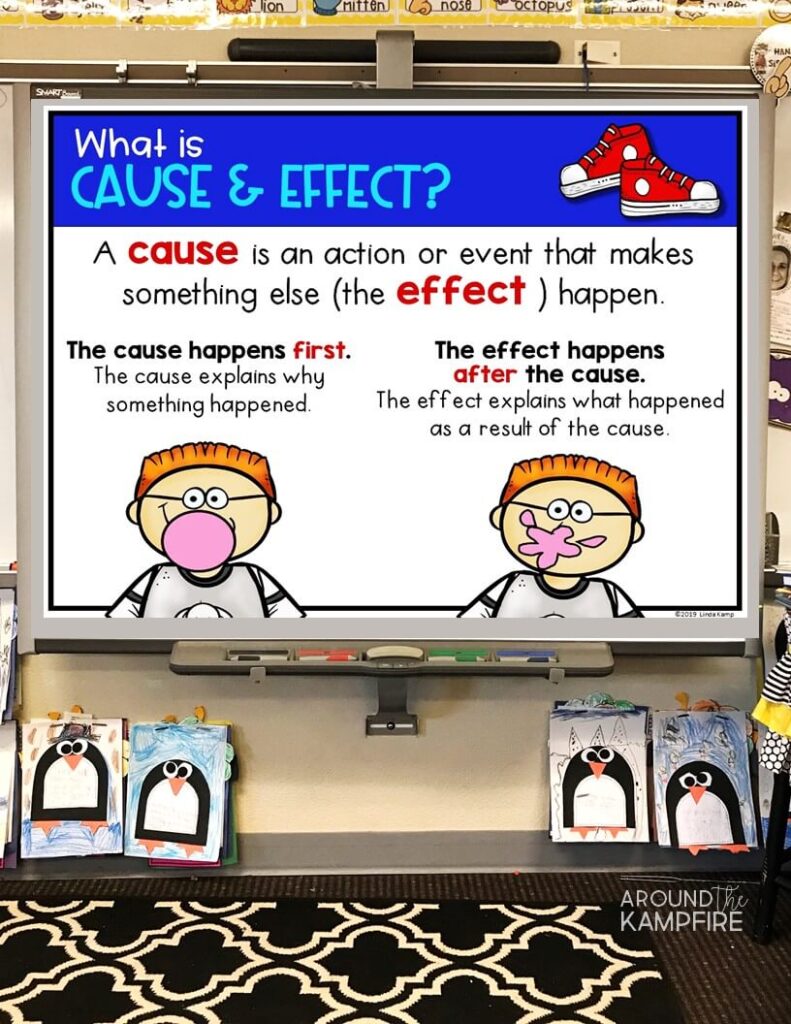
Identifying Cause and Effect in a Text
Alexander’s day, while terrible and horrible, is rich with opportunities for students to identify cause and effect relationships. I have several copies of the book, purchased with Scholastic bonus points, so I had groups of students work together to identify things that happened to Alexander and the actions that caused them. Students then wrote them on sticky notes.
After working with their group, students can add their findings to a class anchor chart.
We extended our cause and effect activities into our literacy centers by matching causes from the story to their effects.
Partners talked about how the author used cause and effect to tell the story.
Click here to download two FREE cause & effect activities.
Working with Vocabulary
As all teachers are, I am strategic when pulling vocabulary from a book we are working with. I like to have students work with words that not only increase their vocabulary but also give opportunities to work with grammar and spelling patterns.
While at the vocabulary center students made mini books to add to a culminating Alexander booklet.
Decoding Longer Words
Like all teachers, I have a wide range of reading abilities in my classroom. This book is a treasure trove of interesting, longer words for students to work with. I pulled words from the book to have students work with decoding and counting syllables in longer words.
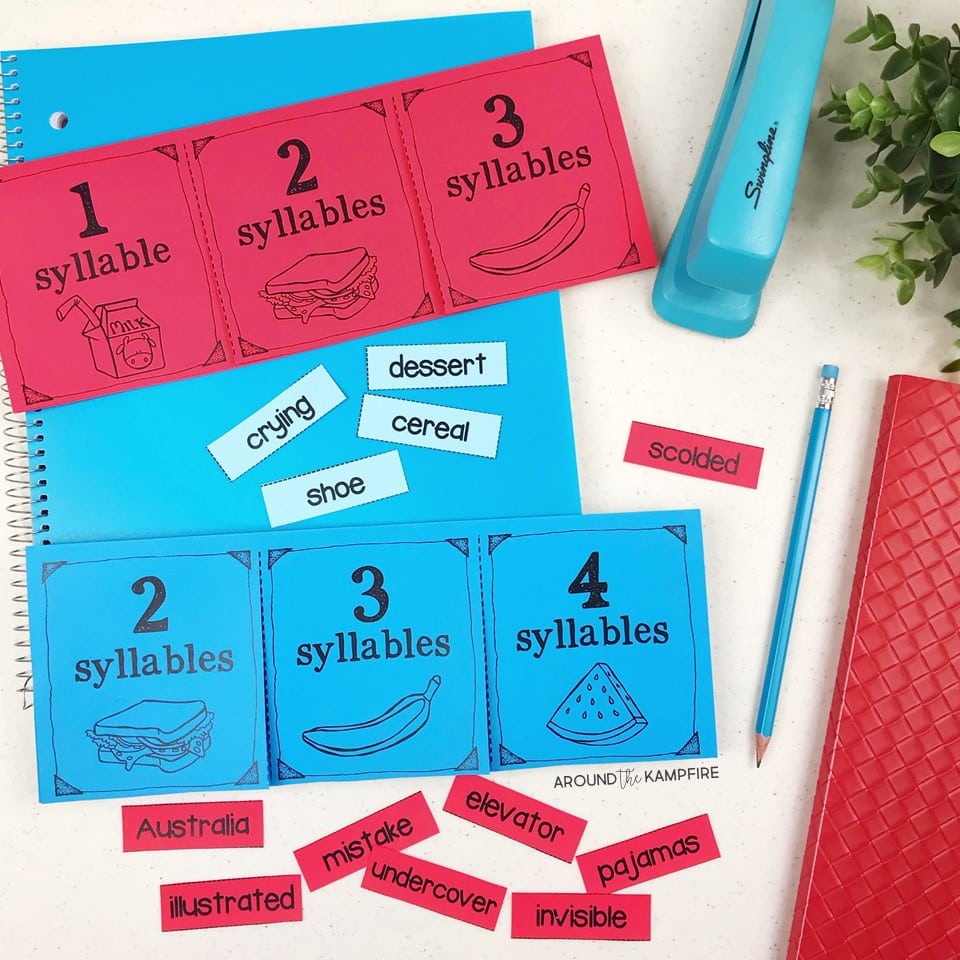
Writing About Reading
At the end of each week my class writes Friday letters to their parents describing what they’ve learned and the highlights of their week. I always have students end their letters with a question their parents can answer when they write back. This week we did something a little different. We wrote persuasive letters from Alexander’s point of view asking “Can we move to Australia?”.
We did several types of writing during our Alexander book study including journal writing about social skills.
Having students work in groups to discuss how these situations feel and how Alexander reacted gives students a chance to think of ways he could have handled them differently or behaved more appropriately. Students also make a deeper connection to the character as they can all relate to conflict with friends and siblings, disappointment, and hurt feelings.
Creating a Timeline
As an extension activity, a group of my students created this flow map type timeline of Alexander’s day.
Creating timelines is a great way to work on retelling skills and even to support summary writing. Students first made a list of key events and wrote them on index cards. Students placed the cards in order and glued them onto a large piece of butcher paper.
Alexander Foldable Lapbooks
I’m always on the lookout for fun ways to compile and display my students’ learning. As a culminating project we put together all of their writing and mini books into an Alexander foldable booklets.
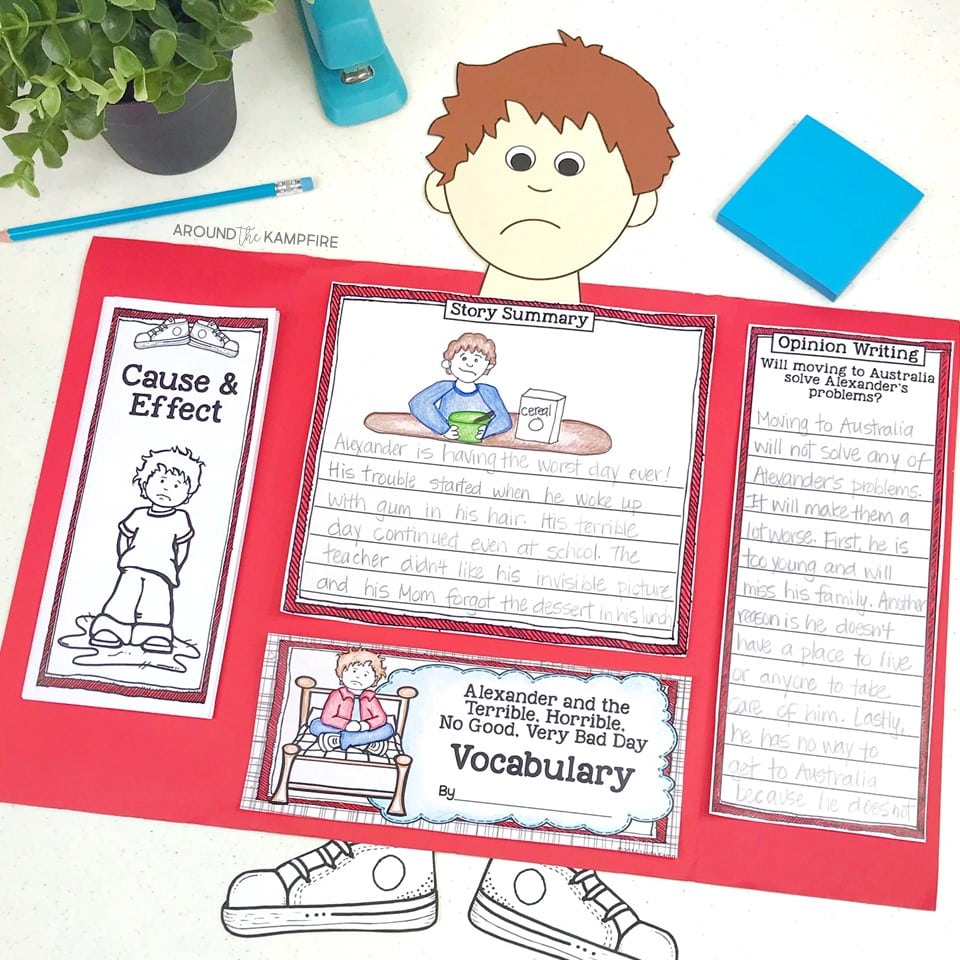
I reserve this kind of project for special books (and my favorite ones). These serve as wonderful learning portfolios that my class is always proud to display.
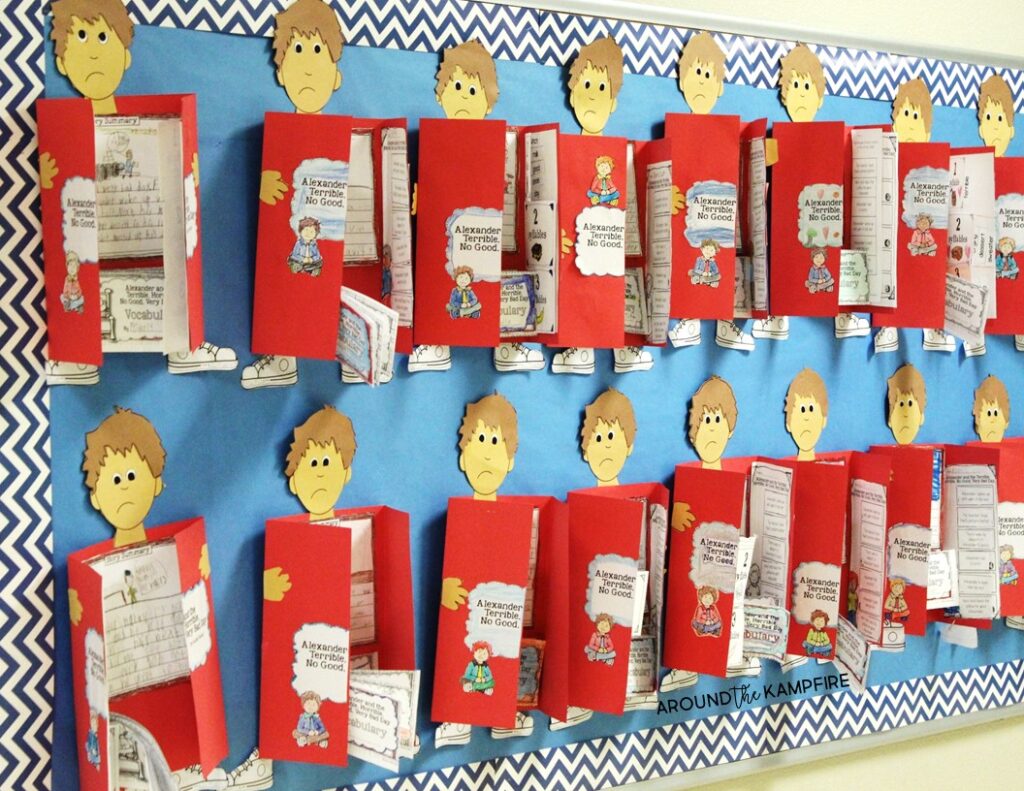
Click Here to see more of this Alexander book study and materials used in this post.
The unit includes a 6-Lesson teaching PowerPoint, literacy centers, assessments, and a customizable Alexander booklet.
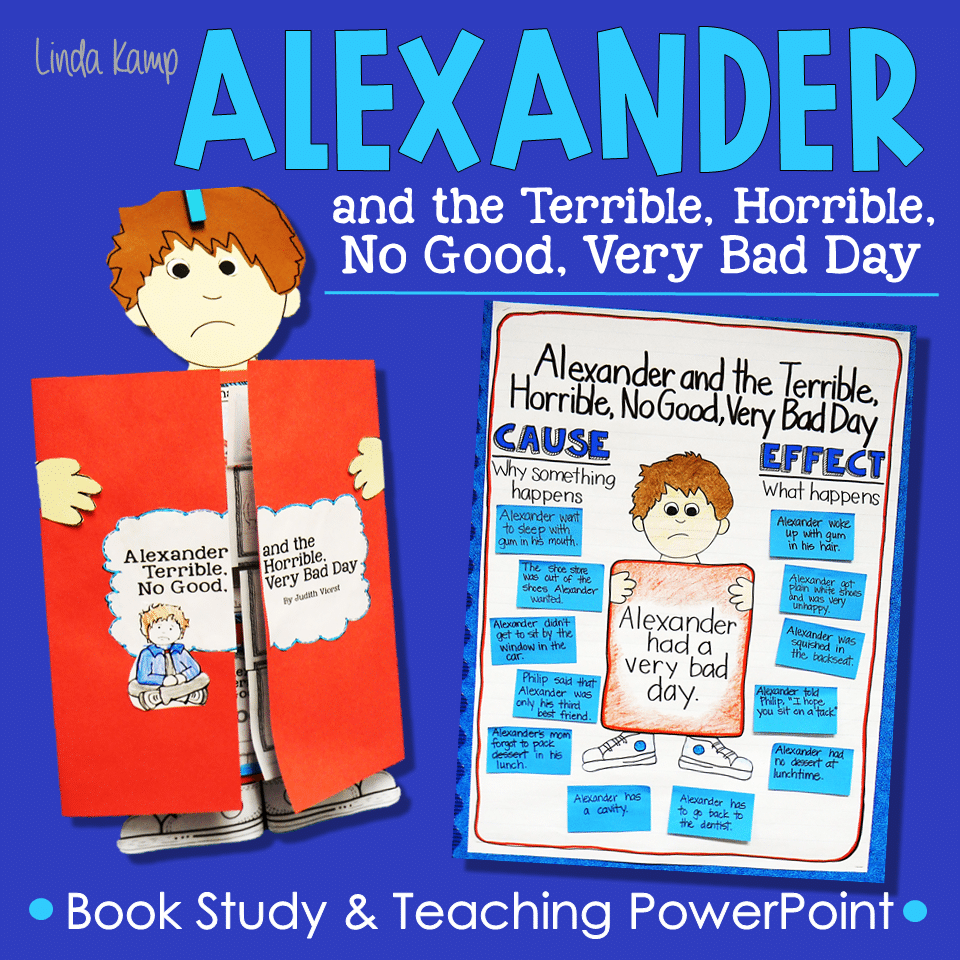
I hope you’ve found some cause and effect activities that will help your students connect causes to effects with this wonderful book. Be sure to pin this for later so you’ll have it when you plan!
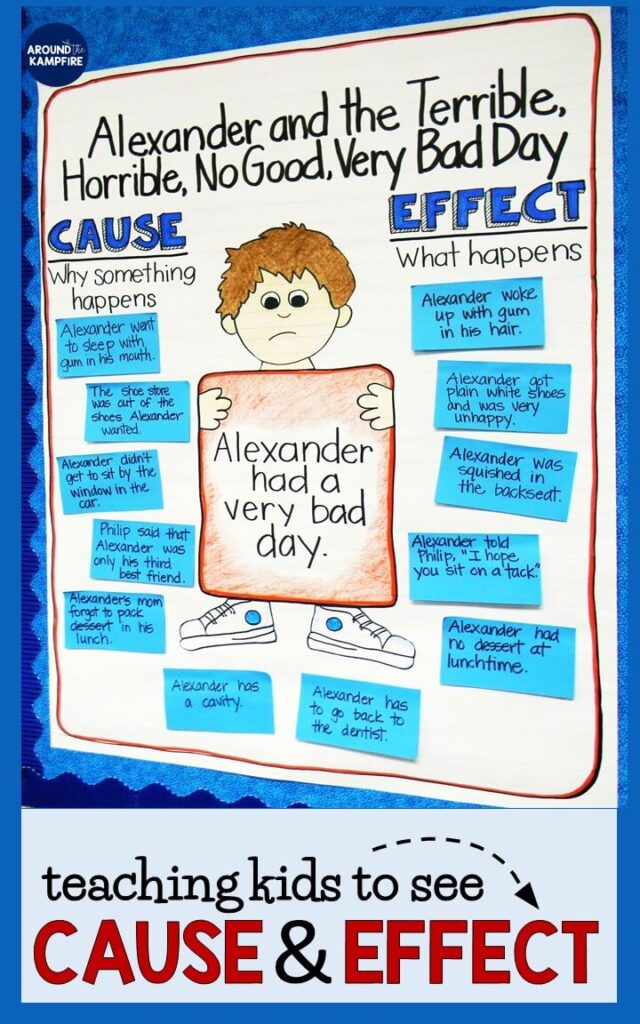
For more book study ideas, and ways to turn your readers into thinkers AND comprehenders, click on the pictures to read these posts!
Stellaluna: Turning Readers Into Comprehenders
Comparing Versions of The Gingerbread Man: Turning Readers Into Thinkers
Determining the Central Message In Gingerbread Stories
Happy teaching!

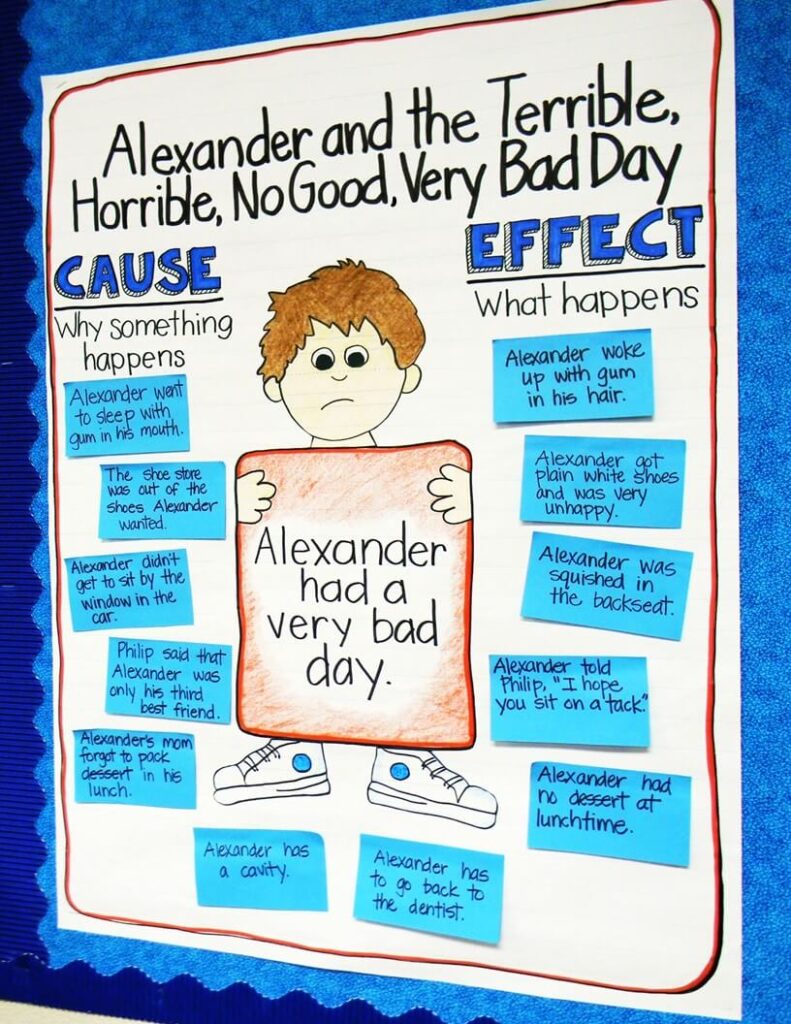
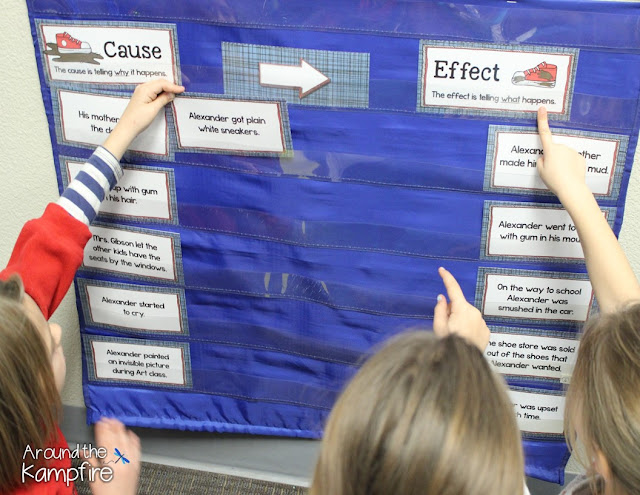
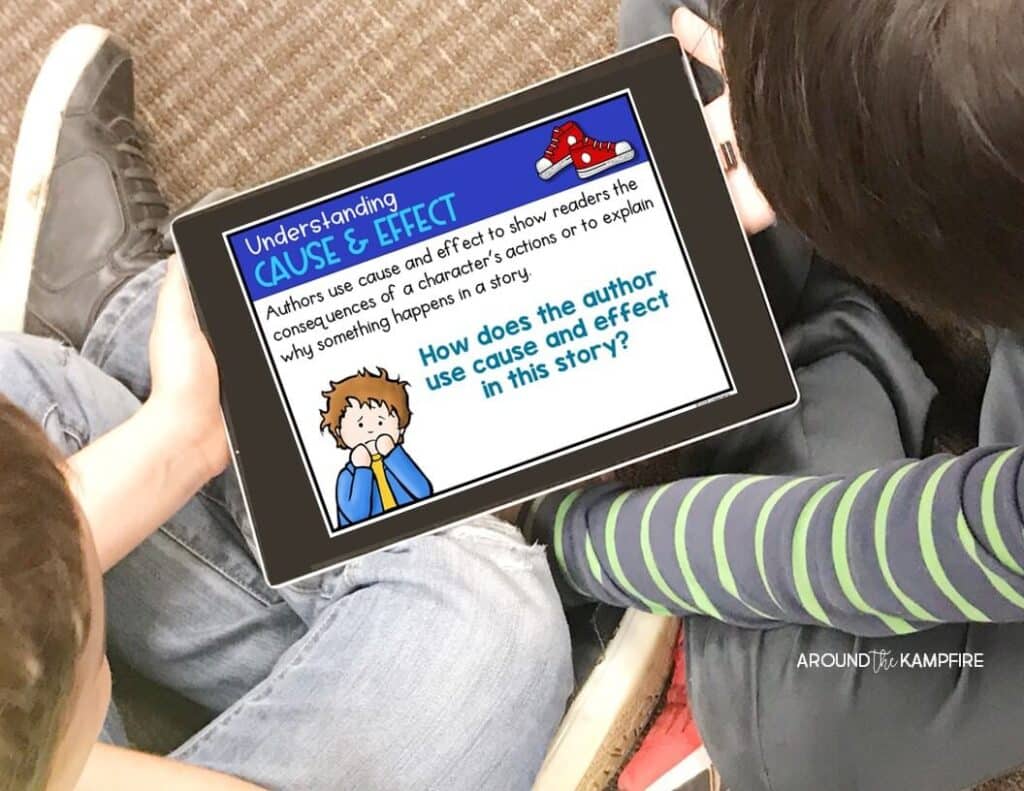
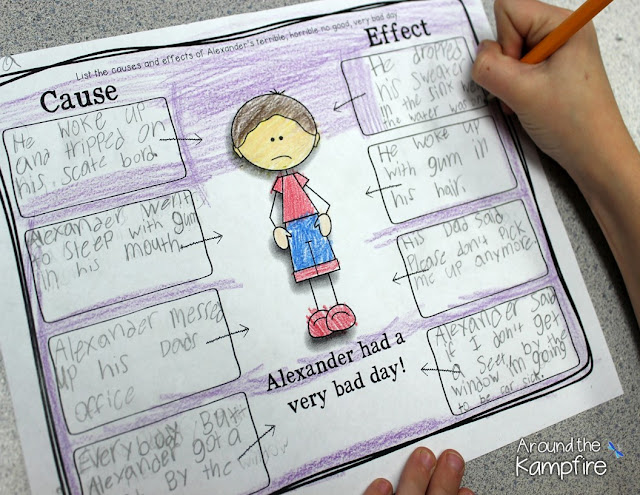
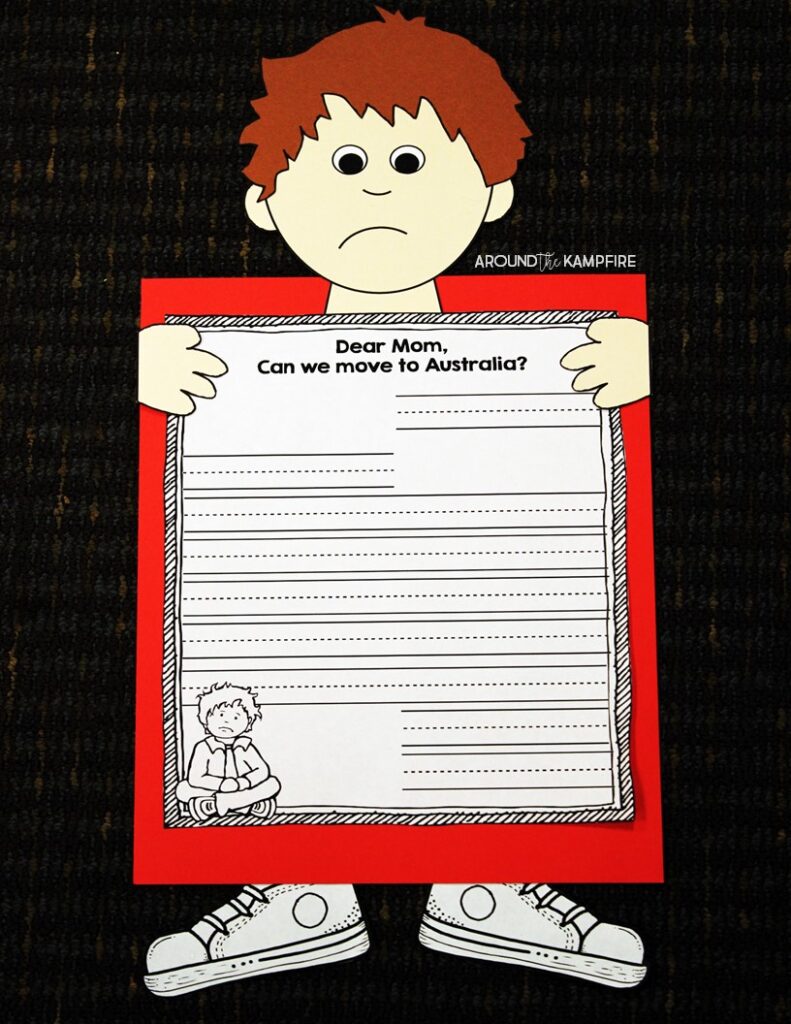
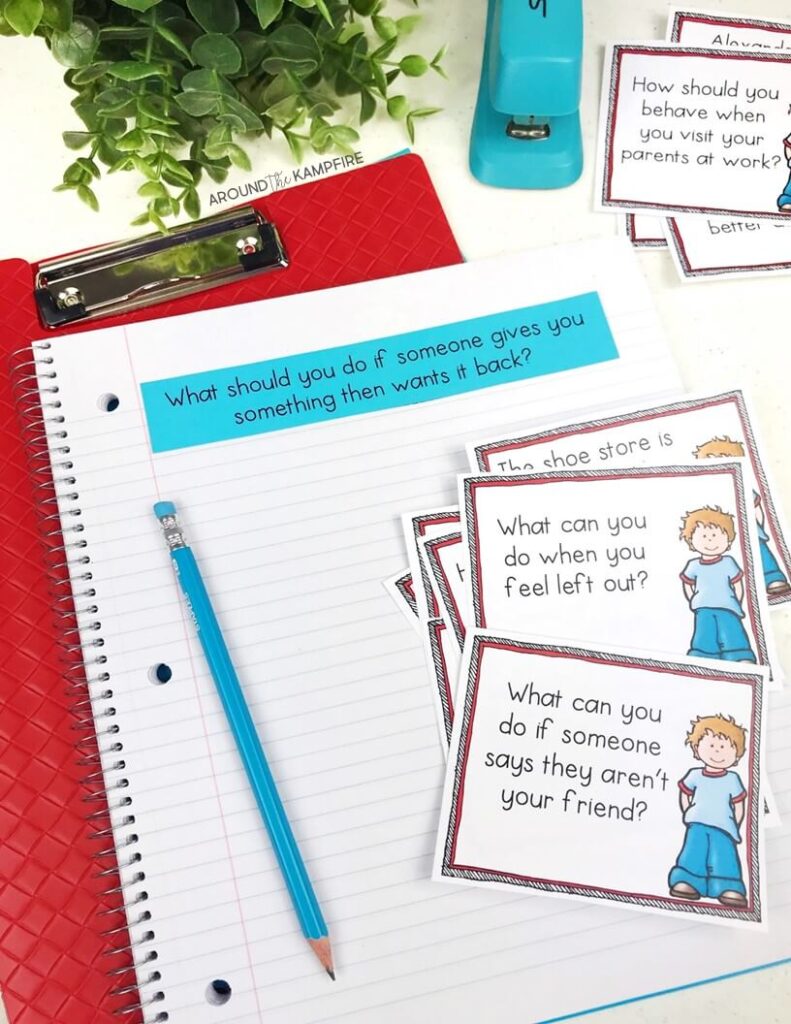

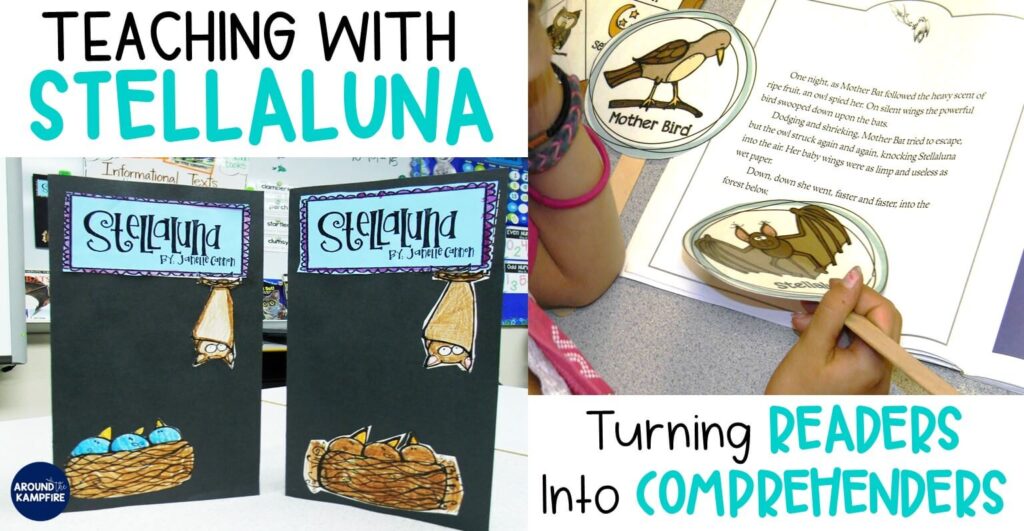
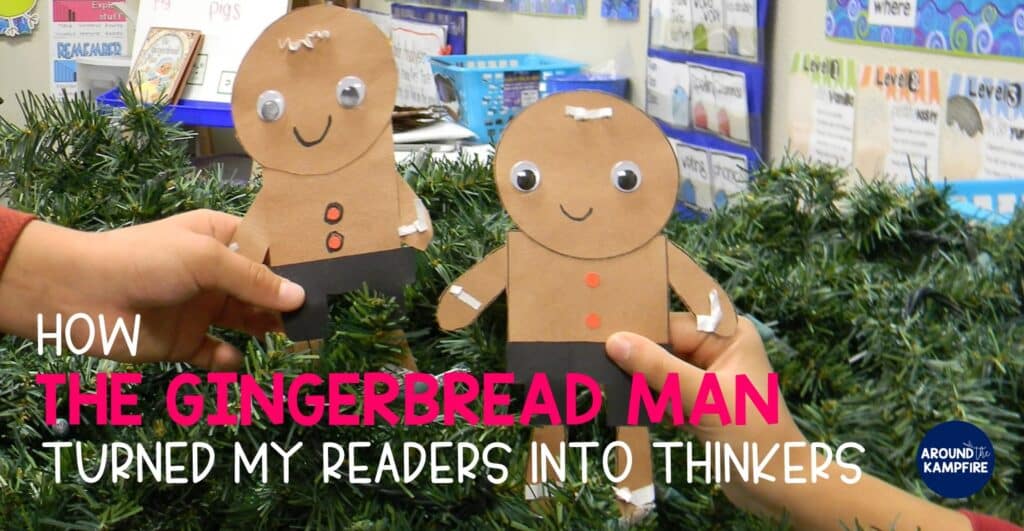

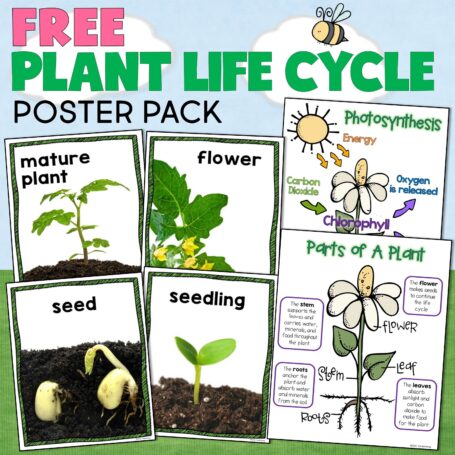
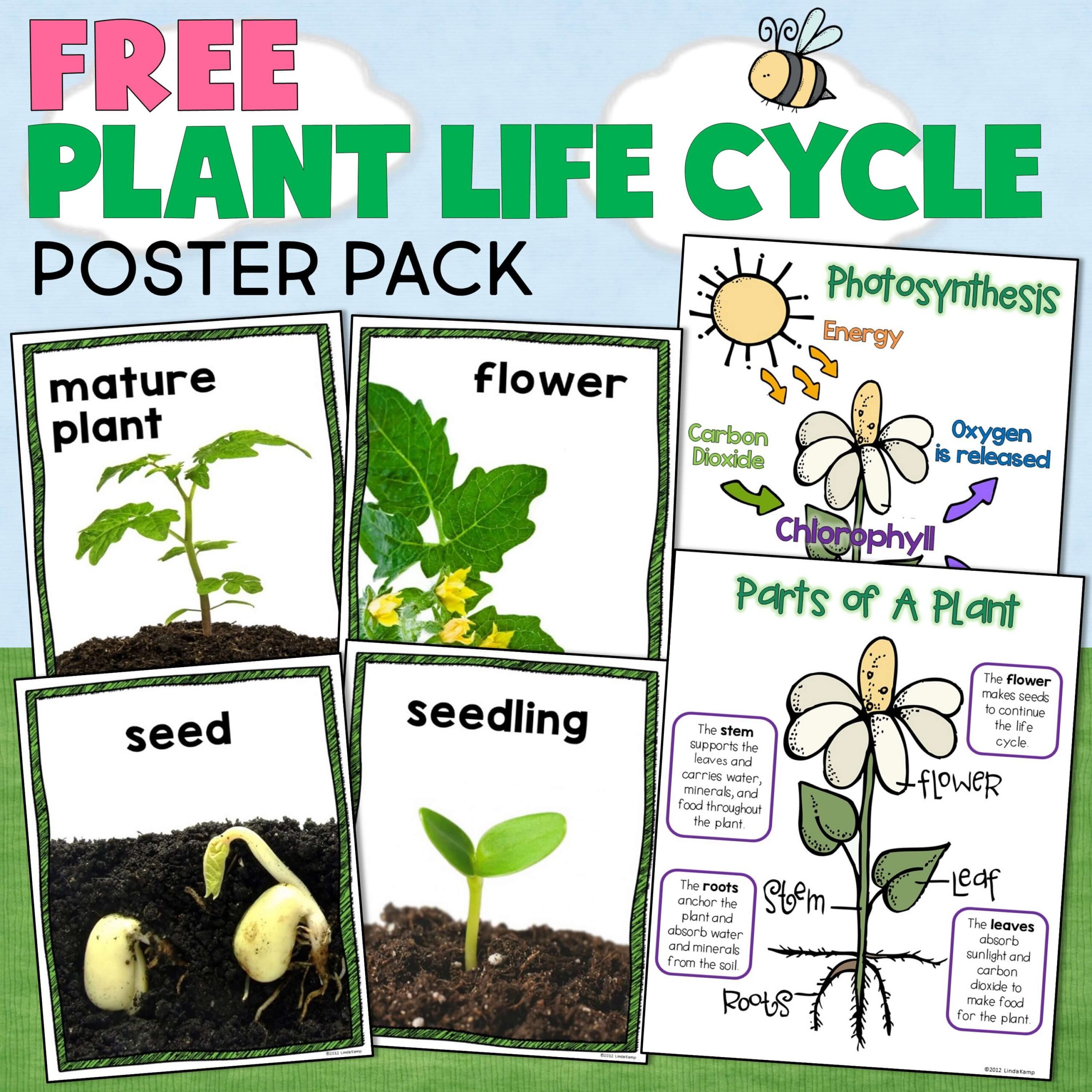

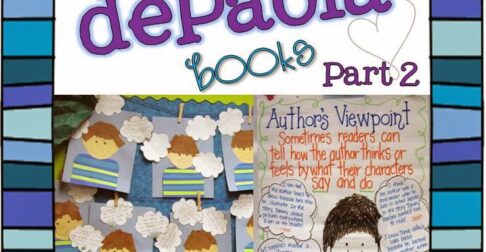
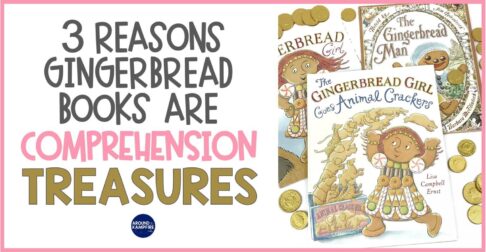

We are just starting ReadyGen and it is overwhelming! I’m a bit OCD and really like to have charts with each area of ELA and then list components for me to plan. You have fleshed our this one book superbly. Thanks
I’m hooked on you!
I’m so glad this posts is helpful for you Manya!
I want to thank you for such great units; each done so wonderfully!I am a special education teacher and these units are perfect! The stories may be a bit low for middle school students, however the familiar books are welcoming to my students and they are more receptive to learning the new concepts being taught.
Thank you!
Hi Rachel! You just made my day, and you are so very welcome!
all the respect, kuddos, and stars in heaven to you for the work you do with our special ed kiddos!
How amazing. So many strategies and skills all using one engaging book:)
Thank you Chloe! The possibilities are endless with this wonderful book! It’s definitely an oldie but goodie!
nice
Linda… these lessons are great and so creative! You're so talented. 🙂